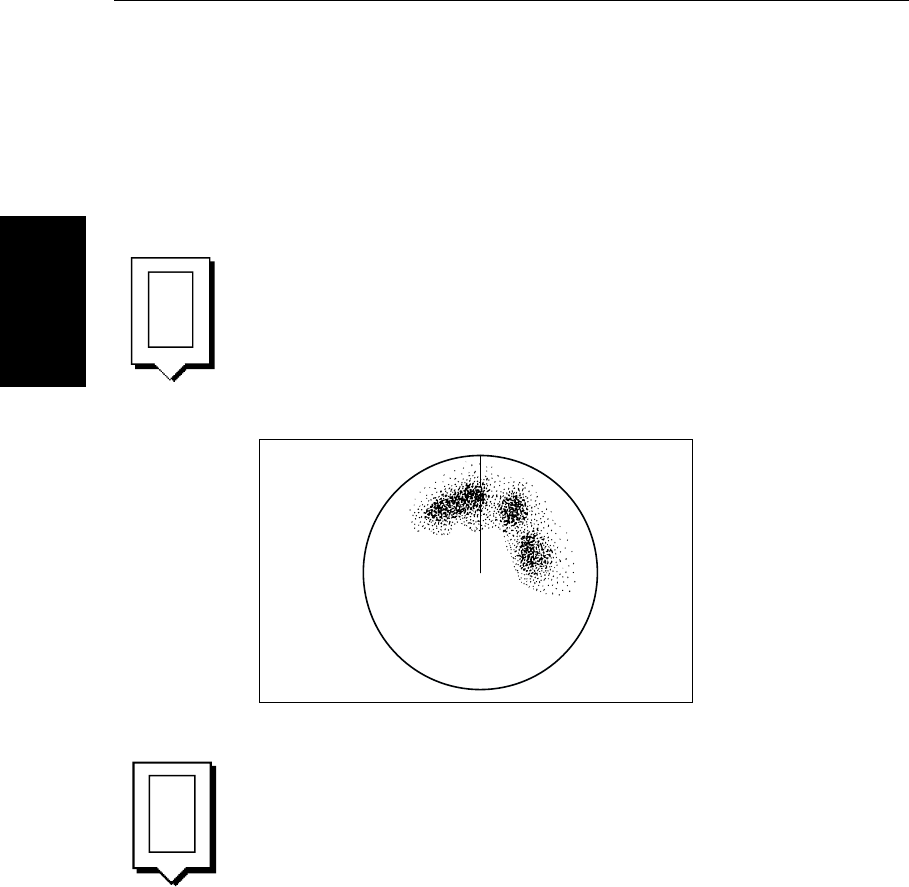
3-10
hsb
2
PLUS Series LCD Display
Adjusting Gain, Sea
Clutter, Rain Clutter
and Tune
Rain Clutter Control, using RAIN and FTC
The radar can see echoes from rain or snow. Returns from storm areas and rain
squalls consist of countless small echoes that continuously change size,
intensity, and position. These returns, shown in Figure 3-8sometimes appear
as large hazy areas, depending on the intensity of the rainfall or snow in the
storm cell.
The
RAIN and FTC controls are used to reduce this clutter, so that targets
masked by the clutter can be seen on the radar picture.
•The
RAIN control is used to reduce large clutter masses around your vessel
caused by rain or snow.
•The
FTC (Fast Time Constant) control is used to reduce rain clutter at a dis-
tance from your vessel, such as that shown below.
Figure 3-8: Rain Clutter
When the FTC control is turned up, only the leading edge of large (rain clutter)
echoes is displayed, while the effect on smaller (ship) echoes is only slight.
This means that you can also use the control on shorter ranges to distinguish
between two very close echoes on the same bearing, which may otherwise
merge and appear as one echo.
When the
FTC control is turned up, the receiver is less sensitive, and there is a
reduction of background noise and fill-in returns from land and large targets.
You should therefore turn the control down when its use is not required. Since
storm cells are usually visible for long distances due to their extreme altitude,
you may wish to leave them displayed so that you can observe the location of
bad weather.
If you turn the
RAIN or FTC control Off (equivalent to setting the level to 0%),
the actual setting is stored, and restored when you turn the control on again.
Note:
RAIN and FTC are reset to Off at power-on.
RAIN
O
F
F
D3967-1
FTC
O
F
F
81186_2.book Page 10 Monday, December 17, 2001 8:35 AM


















